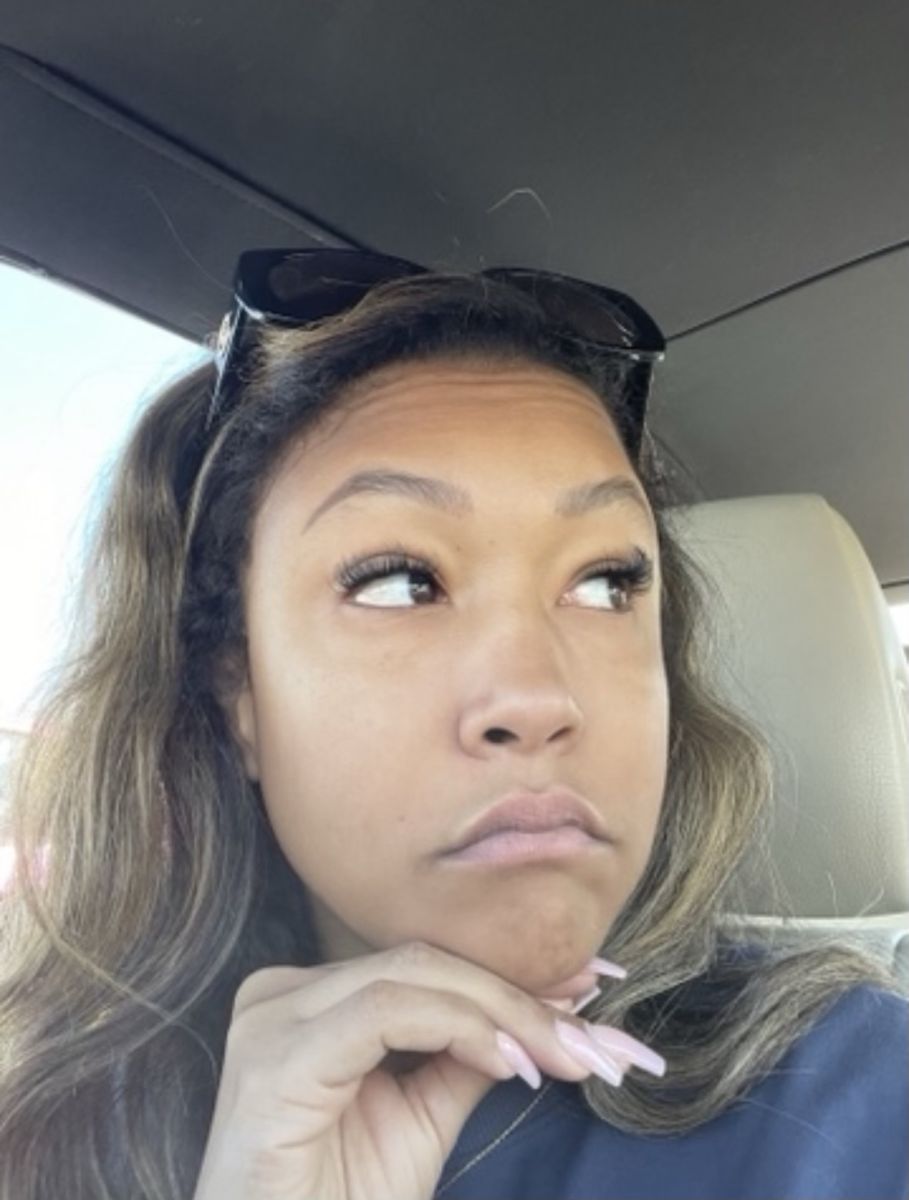Diabetic Macular Edema: How I Almost Went Blind
By Eritrea Mussa
 diaTribe’s Eritrea Mussa lived with well-managed type 1 diabetes for 20 years until one day, an unexpected complication nearly took away her sight. Here’s how she made it out in one piece, vision and all.
diaTribe’s Eritrea Mussa lived with well-managed type 1 diabetes for 20 years until one day, an unexpected complication nearly took away her sight. Here’s how she made it out in one piece, vision and all.
I’ve lived a pretty healthy life since being diagnosed with type 1 diabetes at 8 years old. Over the two decades and counting, I’ve had minimal trips to the emergency room and uneventful eye appointments. I check my feet after the shower. I go to the gym regularly. I make sure to practice key diabetes health behaviors because the risk of complications gets drilled into you after diabetes diagnosis.
I remember how my dad used to tell me as a kid: “Diabetes is a disease where the rule is if you take care of it, it'll take care of you!” It didn't make a lot of sense to me then, but every routine endocrinologist visit included labs and urine tests to make sure those oh-so-scary complications didn't rear their ugly heads.
But what happens when suddenly, after so much caution, a complication you never expected arises?
On Dec. 29, 2019, just shy of my 30th birthday, I flew back to the US after visiting family in Egypt. I was cranky and tired after the long trip, and as soon as I got home, I got into a stupid argument with my partner about some trash that he hadn’t taken out. I yelled and slammed the trash can on the floor. Suddenly, I felt a sharp pain in my right eye. After a few quick blinks and a rush of what felt like tears to my eyes, everything was suddenly blurred. I clutched my eye, terrified.
“Oh my god, I think I just went blind,” I shouted. I sat on the couch and sobbed. This was it, I told myself, believing that the risk of going blind that I'd been warned about had finally become a reality for me, and my time as a healthy person with no diabetes complications had come to an end. I believed at the time that I had no one to blame but myself.
To make matters worse, it was 3 p.m. on a day when the rest of the world was preparing for the new year. I called my optometrist’s office, positive they wouldn't be able to see me. Luckily the office was open the next day, and my doctor fit me in. I asked my partner to drive me to a local pharmacy, where we found a pirate-looking eye patch for the night. The blurriness had started to make me dizzy.
I was unable to sleep. The idea of going blind kept me awake with fits of tears and hyperventilation. I was sure this was the realization of one of my greatest fears: the loss of my sight.
 I’d started wearing glasses at age nine, a year after being diagnosed, and had seen the same optometrist ever since. The next morning, at his office, I removed my eye patch, leaned into the headrest meant to hold my face still, and heard the clicking of the machine. With the cold plastic on my chin and eyes, I could feel myself well up with tears.
I’d started wearing glasses at age nine, a year after being diagnosed, and had seen the same optometrist ever since. The next morning, at his office, I removed my eye patch, leaned into the headrest meant to hold my face still, and heard the clicking of the machine. With the cold plastic on my chin and eyes, I could feel myself well up with tears.
“There is some bleeding in your eye,” he said. “That’s what's causing the blurriness, and the specks you might be seeing in your eye are called floaters. This is usually caused by diabetic retinopathy, which I have been keeping an eye on for you but seems to have suddenly advanced. I'm going to recommend you see a really good friend of mine. Give me a second, I want to call him,” and he stepped out of the room.
I felt like I had been gut punched. His diagnosis sounded like a confirmation of the nightmares I'd had the night before. After about 20 minutes, he came back to the room and said the other doctor, an ophthalmologist, would see me the following week, and that my eye hadn’t looked as bad as I’d feared. I sobbed again – this time out of relief – but I was still worried.
The next week felt like purgatory. I felt sorry for myself and angry with my diabetes. I'd go outside and stare at the sky with just my left eye and take mental pictures. And I cried. I felt like living with diabetes was like a sand hourglass where complications were inevitable, but at age 29, I never expected for the sand to run out on my sight so suddenly. At midnight on New Year’s Eve – one day after I saw my optometrist – I wished for my eyesight back.
Three days later it was time to see the ophthalmologist. A nurse started a special IV to put dye in my eye to see what was going on. They took more photos of my eye with another machine. At this point, it was hard to see at all; everything felt blurry from the dilation and the new machine, which flashed a light brighter than anything I'd ever seen. I then sat at the end of the hall to wait for the the consultation with the doctor.
I remember him walking into a room full of energy and cheerfulness. He showed me photographs of my eye, and he explained that the small bleeding in my eye was the beginning stages of diabetic macular edema (DME), a complication of diabetes and diabetic retinopathy. His suggestion was to use a laser to cauterize the bleeding and possibly follow up with eye injections. These words terrified me. I asked him if these diabetic complications would lead to blindness.
“We’ve caught this pretty early, and over the last 22 years you've taken great care of yourself,” he told me. “Complications are normal and as long as we take care of this, I can promise you: You will not go blind.”
I remember feeling like I could finally breathe. I stopped blaming myself. I had done the best I could for the last two decades, and I had treatment options that would help me keep my vision. “When can we start?” I asked. “Today,” he replied.
He explained that the bleeding in my eye was like a flooded basement, and that he would use a laser therapy to make the flooding stop. He asked me to return in two weeks to see if I needed a shot of anti-VEGF medicine to keep the eye from bleeding. After a painless five minutes of him shining a bright light in my eyes, I was done. Immediately after my appointment, I couldn't see anything. A family member drove me home. I laid down for a while to nap, hoping it would take my mind off things. When I opened my eyes, all of the floaters and splotchy black spots were totally gone, and when I put my glasses back on, everything looked completely normal again. I couldn’t believe it!
Two weeks later I returned to the doctor and, as he’d predicted, I did need the shot of anti-VEGF medicine. And now, two years later, my vision is great, and my regular appointments have been uneventful. Recently – while writing this article, in fact – I saw a small floater in my eye. I made an appointment to check it out. No fear, no more anxiety, just the reminder that DME, like my diabetes, is absolutely manageable. Those initial feelings of paralysis from when this first occurred are distant memories.
I am grateful for the constant research being done in this field to improve the quality of life for those of us who may be struggling with DME. I am also lucky to have incredible doctors. It occurs to me that sometimes the best thing you can do to care for yourself can be as simple as keeping up with provider appointments.








